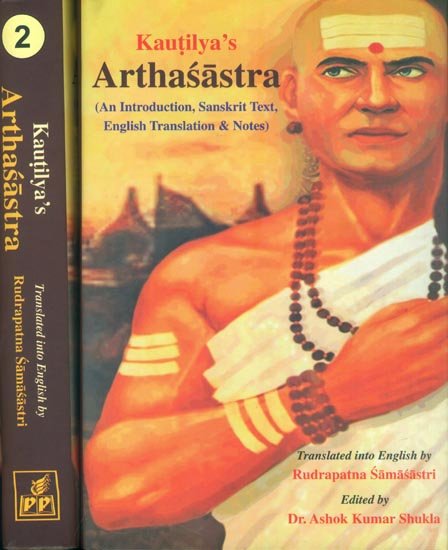Kautilya Arthashastra
by R. Shamasastry | 1956 | 174,809 words | ISBN-13: 9788171106417
The English translation of Arthashastra, which ascribes itself to the famous Brahman Kautilya (also named Vishnugupta and Chanakya) and dates from the period 321-296 B.C. The topics of the text include internal and foreign affairs, civil, military, commercial, fiscal, judicial, tables of weights, measures of length and divisions of time. Original ...
Chapter 1 - Encampment
[Sanskrit text for this chapter is available]
On a site declared to be the best according to the science of buildings, the leader (nāyaka), the carpenter (vardhaki), and the astrologer (mauhūrtika), should measure a circular, rectangular, or square spot for the camp, which should, in accordance with the available space, consist of four gates, six roads, and nine divisions.
Provided with ditches, parapets, walls, doors, and watch towers for defence against fear, the quarters of the king, 1,000 bows long and half as broad, should be situated in one of the nine divisions to the north from the centre, while to the west of it his harem, and at its extremity, the army of the harem are to be situated. In his front, the place for worshipping gods; to his right the departments of finance and accounts; and to his left the quarters of elephants and horses mounted by the king himself. Outside this, and at a distance of 100 bows from each other, there should be four divisions made by carts (śakata), thorny trees, pillars and walls. In the first (of these four divisions), the prime minister and the priest (should have their quarters); to its right the store-house and the kitchen; to its left the store of raw products and weapons; in the second division the quarters of the hereditary army and of. horses and chariots; and of the commander; in the third, elephants, the śreni, and the praśāstri; in the fourth, free labourers, the leader, the army of the friend and the enemy with its own commander; traders, and prostitutes along the high road; outside this, hunters and keepers of dogs with their trumpets and with fire; also spies and sentinels; also to prevent the attack of enemies, wells, mounds and thorns should be arranged. The eighteen divisions of sentinels employed for the purposes of securing the safety of the king should be changing their watches in turn. In order to ascertain the movements of spies, a time-table of business should also be prepared during the day. Disputes, drinking, social gatherings, and gambling should also be prohibited. The system of passports should also be observed. The officer in charge of the boundary (of the camp) should supervise the conduct of the commander-in-chief and the observance of the instructions given to the army.[1]
* The instructor (praśāstā), with his retinue and with carpenters and free labourers, should carefully march in front on the road, and should take protective measures and dig wells of water.
[Thus ends Chapter I, “Encampment,” in Book X, “Relating to War” of the Arthaśāstra of Kauṭilya. End of the hundred and twenty-ninth chapter from the beginning.]
Footnotes and references:
[1]:
Senā nivritta māyudhīyamaśāsanam Śūnyapālo’ nubadhniyāt,” is also a reading. It means, “The officer called Śūnya Pāla should catch hold of a soldier deserting the camp without order.”
